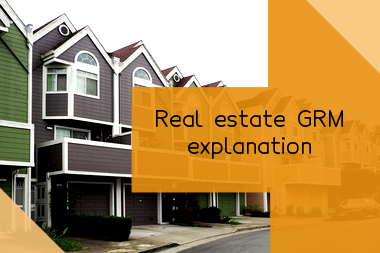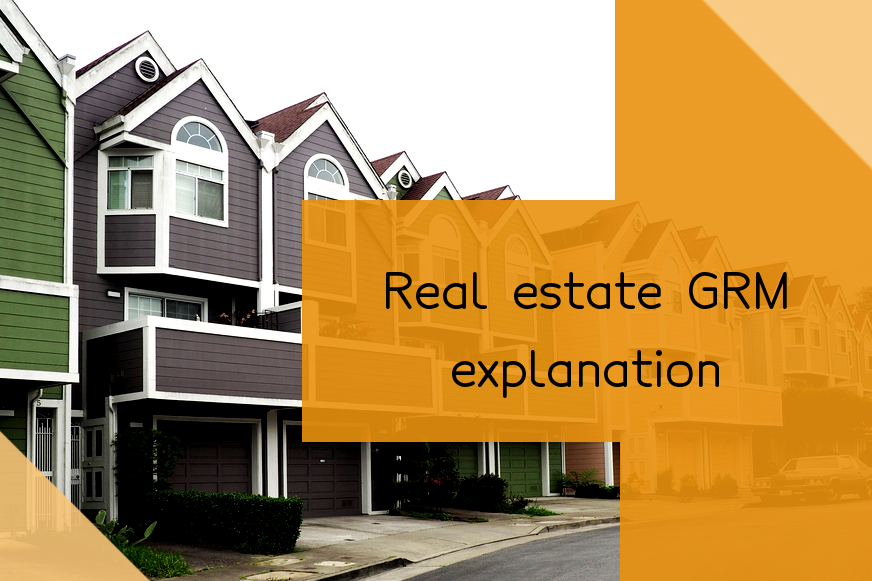Gross Rent Multiplier (GRM) is a real estate investment measure that relates the purchase price of a rental property to its potential rental income. It is calculated by dividing the propertys purchase price by its gross annual rental income.
For example, if a rental property costs $500,000 and generates $60,000 in gross annual rental income, the gross rent multiplier is 8.3.
To use GRM in real estate, investors look for properties with low GRMs, indicating that the value of the property is relatively low compared to the amount of rental income it generates. A low GRM suggests that the property is a good investment opportunity with a high potential for cash flow.
GRM is a useful metric for comparing properties of similar size and rental income potential when deciding which investment property to purchase. Additionally, GRM can be used to estimate the value of a property based on its potential rental income, which can be useful when evaluating the profitability of a rental property.
Gross rent multiplier formula
The gross rent multiplier (GRM) formula calculates the relationship between a property's purchase price and its potential rental income. It is calculated by dividing the sale price of the property by the annual gross rental income. The formula is as follows:
Gross Rent Multiplier = Property Price / Gross Annual Rental Income
For example, if a property is being sold for $500,000 and its potential annual rental income is $50,000, the GRM would be:
GRM = $500,000 / $50,000 = 10
This means that it would take 10 years of rental income to pay off the purchase price of the property. The lower the GRM, the more attractive the property is as an investment because it indicates a higher potential return on investment. However, it is important to remember that the GRM does not take into account expenses such as property taxes, repairs, and maintenance, which can also impact the overall profitability of the property.
Calculate Gross Rent Multiplier: Example
To calculate the gross rent multiplier (GRM), follow these steps:
- 1Determine the market value of the property:
Let's say a property is valued at $500,000.
- 2Find the annual gross rental income:
Assume the property generates a gross rental income of $50,000 per year.
- 3Calculate the GRM:
GRM = Market Value / Annual Gross Rental Income
GRM = $500,000 / $50,000
GRM = 10
Therefore, the gross rent multiplier for this property is 10.
This means that it would take 10 years of collecting the annual gross rental income to recoup the investment in the property. However, the GRM should be used in conjunction with other factors such as operating expenses and vacancy rates to accurately assess the profitability of the investment.
Gross Rent Multiplier Calculator
A gross rent calculator is an online tool that helps calculate the gross rental income for a rental property. The calculator takes into account the monthly rental income, any additional income from things like parking or storage, and any other potential income. This tool also factors in any vacancies, expenses like utilities, repairs, and maintenance costs. The gross rent calculator provides a clear picture of the property's cash flow and profitability. It can be an essential tool for real estate investors and landlords as they evaluate potential investments and make decisions regarding existing rental properties.
Or even better use a real estate analytics platform like GoRepa.
How to Use GRM in Real Estate Investing
GRM or Gross Rent Multiplier is a metric that measures the relationship between the price of a property and its operating income (generated from rent). It is used in real estate investing to quickly evaluate the potential profitability of a rental property. Here are the steps to use GRM in real estate investing:
- 1Find the property's annual gross rental income: The first step is to calculate the total amount of rental income generated by the property on an annual basis. This includes all rental income, such as monthly rent, parking fees, etc.
- 2Determine the property value: Once you have the annual gross rental income, determine the market value of the property. This can be done by researching similar properties in the area and finding their market values.
- 3Calculate the GRM: Divide the property value by the annual gross rental income. This will give you the GRM for the property.
- 4Interpret the GRM: A lower GRM indicates that the property generates a higher rental income relative to its value and is therefore a better investment. A higher GRM indicates that the property generates a lower rental income relative to its value and may not be as profitable.
- 5Use the GRM to make investment decisions: The GRM can be used as a quick tool to evaluate the potential returns of a rental property investment. Lower GRMs are generally considered more favorable.
It is important to note that GRM is only one metric in real estate investing and should be used in combination with other metrics such as cap rate, cash-on-cash return, and internal rate of return. Additionally, it is important to consider other factors such as location, condition of the property, and vacancy rates before making a final investment decision.
Just one more thing: if you liked the article, please like us on social media and share this article with friends.



